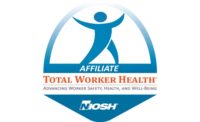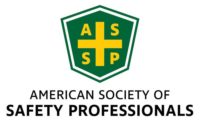On the last day of ASSP’s in-person show in Austin, Jim Frederick, Acting Assistant Secretary of Labor for Occupational Safety and Health, spoke to attendees on COVID-19 and OSHA’s current priorities.
Many had hoped Frederick would attend the conference in person. When Blaine Krage, senior media relations specialist at ASSP, announced Frederick would be giving a presentation he recorded on Friday, there was an audible groan of disappointment from the crowd. However, Frederick did appear live via Zoom after the half-hour recorded update to do a question-and-answer segment with Krage.
He began by stressing the importance of workplace safety and health, now more than ever, and said OSHA has “worked diligently since January to move on President Biden’s executive order to help protect workers from contracting COVID-19.
We are also prioritizing, getting our compliance officers on site during inspections, while also taking the necessary steps to ensure our workers’ safety. A pandemic is still evolving, and we'll continue to monitor vaccination progress, virus variance, and other factors that will guide our continued efforts to ensure workers are protected from the virus while they're on the job.”
On President Biden’s emergency temporary standard
“We at OSHA are assessing where we currently are on the process, we’re putting together our thoughts and ideas, we’re continuing to work with health experts across the government to make certain that OSHA is a part of the overall government approach to address COVID-19 and we will keep stakeholders posted as we move forward as expeditiously as possible on implementing this new emergency temporary standard and make certain that you are updated as the progress of COVID-19 has been a major focus.”
Hiring at OSHA
He said OSHA is requesting an increase of more than $73M, mainly for hiring more than 200 additional compliance officers and support staff to bolster enforcement efforts.
“We need to continue to build and strengthen OSHA's enforcement program and ensure that the full range of enforcement tools are available to be used to make the greatest impact on worker health and safety. We're doing that by rebuilding OSHA's inspection capacity… But it's not just that, we also need to make sure that we're focusing our resources and our efforts where they'll have the greatest impact. We need to make sure we use our full range of enforcement tools and and try to have the vast impact we can.”
Q and A
Krage: As many of our members know, ASSP is a strong proponent of workplace risk assessment. Do you think COVID has elevated the role of risk assessment and Occupational Safety and Health?
Frederick: I certainly think that the terrible events of the last year and a half plus have provided additional safety professionals with a much more elevated status and so many facets of our lives. And this is an opportunity for us to continue as we move forward, continue to fight through this issue of endemic any associated variants that we're facing and tried to get to the other end and make certain that we continue the elevation of Occupational Safety and Health in all of our organizations.
Krage: Where do you see OSHA going with management systems as far as encouraging our implementation?
Frederick: One of the real keys here for us is to make certain that we're going to those workplaces with very mature workplace health and safety management systems, and learning from them and sharing the learnings that we do at those workplaces, with others in the regulated community that need help to get to a better place.
COVID work
Krage asked Frederick to speak on some concerns from ASSP members about OSHA’s COVID initiatives and how it has taken time away from traditional safety and health issues.
Frederick said it’s difficult to balance and one OSHA struggles with on a daily basis.
“We are dealing with the exact same concerns that folks in the room or virtually through the folks watching from wherever they are experienced, of having staff contract COVID-19 and not being available. So having to deal with things like exposure when they are together on an inspection request.
“But a couple of things that we have been have been doing since January to make certain that we're moving forward in the right direction is one, making certain that the protections and the controls that are in place for the field staff of OSHA, as well as the office staff in any of our field offices, are present and available. They're being utilized so that our compliance officer safety when they're in the workplace is in the forefront. And then the second thing of that equation has been making certain that we get the field staff back into workplaces where complaints have been generated from or other reasons that were there for inspection. So you know, kind of that two-pronged approach, make sure we're doing it safe and making sure we're also there in person.”




